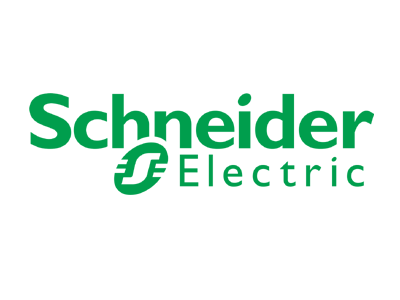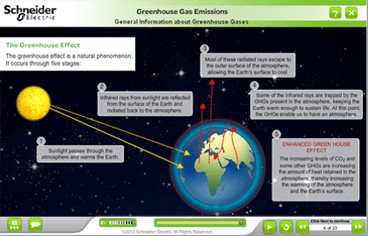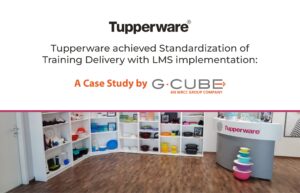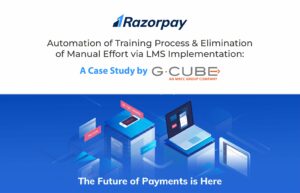
Reduced Carbon Footprint Using Effective E-learning Content
Awareness Courses on Reducing CO2 es

Reduced Carbon Footprint Using Effective E-learning Content
Awareness Courses on Reducing CO2 es

- Home
- Case Study
- Schneider Electric – Reduced Carbon Footprint Using Effective E-learning Content
Share This Post
Share This Post
Facebook
LinkedIn
Twitter
Latest Case Studies

Overview
Schneider Electric is a global specialist in energy management with operations in more than 100 countries.
- Client :
- Schneider Electric
- Category :
- Service Case Study
- Industry :
- Applied Sciences
Business Requirements
- Client wanted to convert the information into a format which would find an instant appeal among their employees.
- Client also wanted to reduce CO2 es so that employees could work in a safe environment.
Challenges
- There was a need to deliver interactive training on Transportation CO2 Es.
- They wanted to inculcate a strong connect with the help of real facts and figures to encourage employees to get involved in taking proactive measures to reduce CO2 es.
Our Solution
- G-Cube created a green-initiative course, which was engaging as well as effective.
- Moving away from a dry and formal approach of content presentation, we infused the course with graphics, animations and multimedia to invoke a deep sense of responsibility for the environment and a commitment to take accountable measures to curb CO2 es.
- The user interface was simple and clean – devoid of any elements that might disturb the calm green-and-white background. Navigation was easy and straightforward, keeping in mind that many employees may be new to the concept of self-paced e-learning.
- The Introduction showed the course structure – allowing employees to plan and chart their way through the course.
- A 2D mentor was introduced to ‘speak-out’ to the employees. Animations, charts and graphs were liberally used, ensuring that even the most complicated topics could be easily explained and retained. All technical tabulated data was converted into charts and graphs, so that the learners can easily assess the environmental changes that have happened over time.
- Extensive use of animations and multimedia ensured that even the most complicated topics could be easily explained and retained.
- Questions were added after every concept taught, to provide the required reinforcement of knowledge gained by the learners. A varied array of questions was created – from simple ‘True or False’ and Multiple Choice questions to the interactive drag-and-drop type. This made sure that the employees were suitably challenged and provoked to think about the knowledge gathered.
- We concluded the course with a comprehensive post-assessment test and certification. While Check-Your-Understanding tests were included at the end of each topic in both the courses, the comprehensive test checked the understanding of the employees with a broader perspective. This strategy ensured that learners go through all the content in the course carefully and get certified in order to work toward Schneider Electric’s goal of meeting 10% reduction in transport CO2 e.
Benefits
- The e-learning approach enforced the key rules and worldwide standards regarding measurement of CO2 in transportation for all stakeholders across the organization. This aided building of a sense of community on the ‘transport carbon’ topic and unified all to work towards minimizing its harmful effects.
- The approach also made relevant information available for all in simple and executable messages across the length and breadth of Schneider Electric. Global offices, which were spread across different geographies and time-zones, could access the course as per their schedules and gain immediate insight.
- As a direct impact of the course, the employees of Schneider Electric were now more sensitive and concerned about reducing CO2 e. They were empowered to take informed decisions.
- The client has been able to deduce a 14.8% decrease in CO2 e in Q4-2012 as opposed to the target of 10% for the period of 2012-2014.
- This achievement was a huge step toward creating a sustainable model for reducing CO2 es. Its success was a testimony to the fact that–by understanding the seriousness of the greenhouse gas es and charting a sustainable way to reduce the es – it is possible to create a cleaner and greener environment for the generations to come.
- The success of the model also proved that the same can be built for a number of organizations and industries. With a proper, impactful channel of knowledge delivery and sustained effort of the people, every organization in the world could work towards reducing harmful es and saving the environment.

Overview
Schneider Electric is a global specialist in energy management with operations in more than 100 countries.
- Client :
- Schneider Electric
- Category :
- Service Case Study
- Industry :
- Applied Sciences
Business Requirements
- Client wanted to convert the information into a format which would find an instant appeal among their employees.
- Client also wanted to reduce CO2 es so that employees could work in a safe environment.
Challenges
- There was a need to deliver interactive training on Transportation CO2 Es.
- They wanted to inculcate a strong connect with the help of real facts and figures to encourage employees to get involved in taking proactive measures to reduce CO2 es.
Our Solution
- G-Cube created a green-initiative course, which was engaging as well as effective.
- Moving away from a dry and formal approach of content presentation, we infused the course with graphics, animations and multimedia to invoke a deep sense of responsibility for the environment and a commitment to take accountable measures to curb CO2 es.
- The user interface was simple and clean – devoid of any elements that might disturb the calm green-and-white background. Navigation was easy and straightforward, keeping in mind that many employees may be new to the concept of self-paced e-learning.
- The Introduction showed the course structure – allowing employees to plan and chart their way through the course.
- A 2D mentor was introduced to ‘speak-out’ to the employees. Animations, charts and graphs were liberally used, ensuring that even the most complicated topics could be easily explained and retained. All technical tabulated data was converted into charts and graphs, so that the learners can easily assess the environmental changes that have happened over time.
- Extensive use of animations and multimedia ensured that even the most complicated topics could be easily explained and retained.
- Questions were added after every concept taught, to provide the required reinforcement of knowledge gained by the learners. A varied array of questions was created – from simple ‘True or False’ and Multiple Choice questions to the interactive drag-and-drop type. This made sure that the employees were suitably challenged and provoked to think about the knowledge gathered.
- We concluded the course with a comprehensive post-assessment test and certification. While Check-Your-Understanding tests were included at the end of each topic in both the courses, the comprehensive test checked the understanding of the employees with a broader perspective. This strategy ensured that learners go through all the content in the course carefully and get certified in order to work toward Schneider Electric’s goal of meeting 10% reduction in transport CO2 e.
Benefits
- The e-learning approach enforced the key rules and worldwide standards regarding measurement of CO2 in transportation for all stakeholders across the organization. This aided building of a sense of community on the ‘transport carbon’ topic and unified all to work towards minimizing its harmful effects.
- The approach also made relevant information available for all in simple and executable messages across the length and breadth of Schneider Electric. Global offices, which were spread across different geographies and time-zones, could access the course as per their schedules and gain immediate insight.
- As a direct impact of the course, the employees of Schneider Electric were now more sensitive and concerned about reducing CO2 e. They were empowered to take informed decisions.
- The client has been able to deduce a 14.8% decrease in CO2 e in Q4-2012 as opposed to the target of 10% for the period of 2012-2014.
- This achievement was a huge step toward creating a sustainable model for reducing CO2 es. Its success was a testimony to the fact that–by understanding the seriousness of the greenhouse gas es and charting a sustainable way to reduce the es – it is possible to create a cleaner and greener environment for the generations to come.
- The success of the model also proved that the same can be built for a number of organizations and industries. With a proper, impactful channel of knowledge delivery and sustained effort of the people, every organization in the world could work towards reducing harmful es and saving the environment.
Share This Post
Facebook
LinkedIn
Twitter






